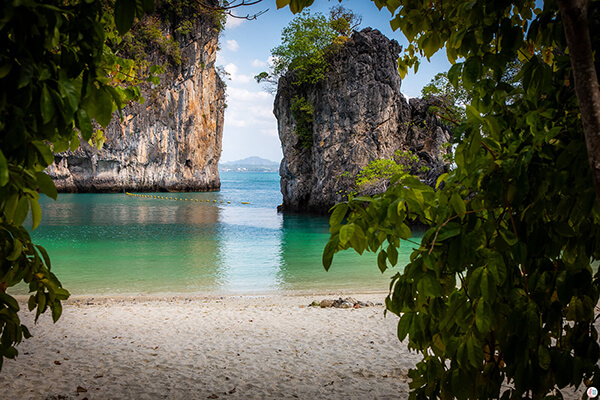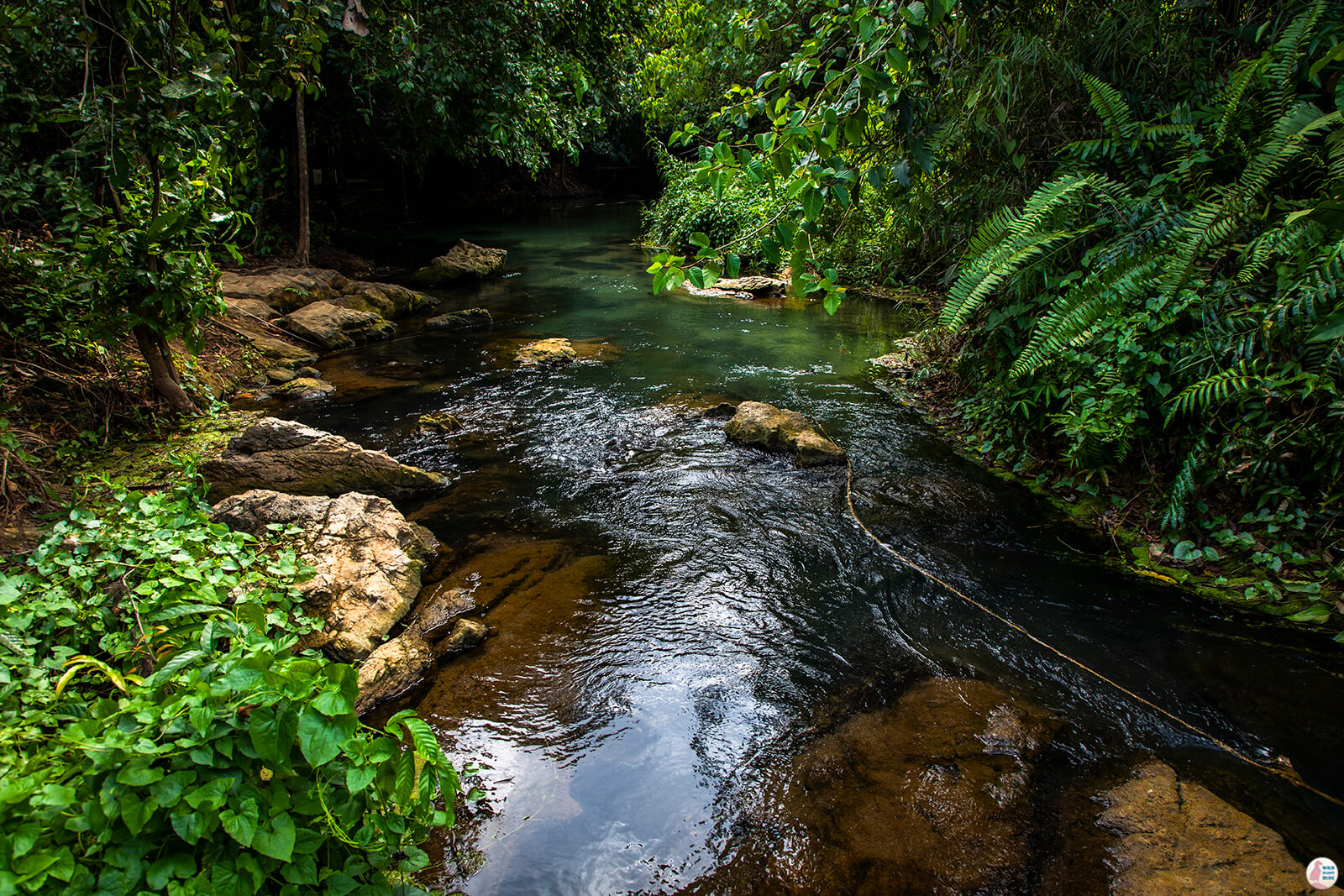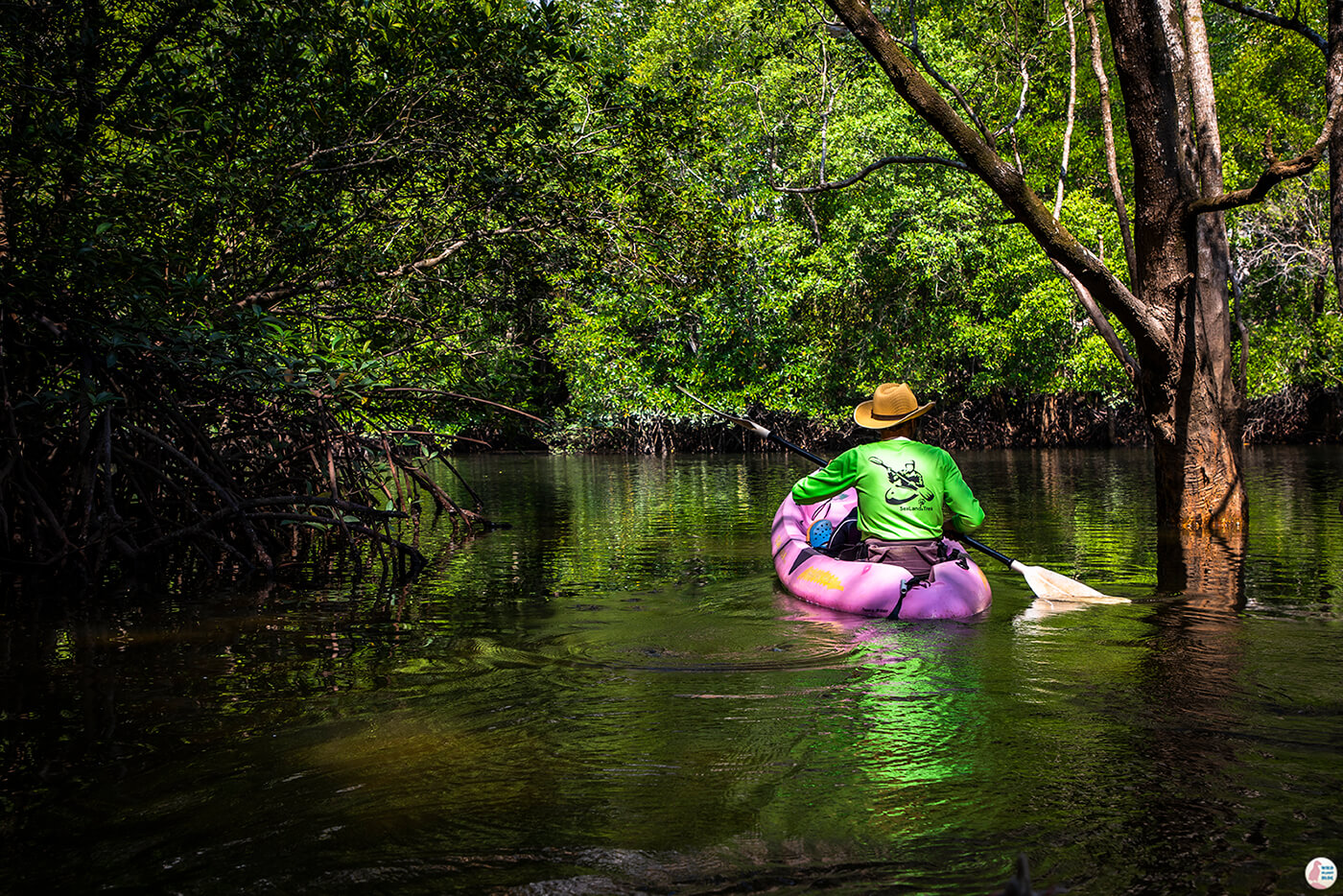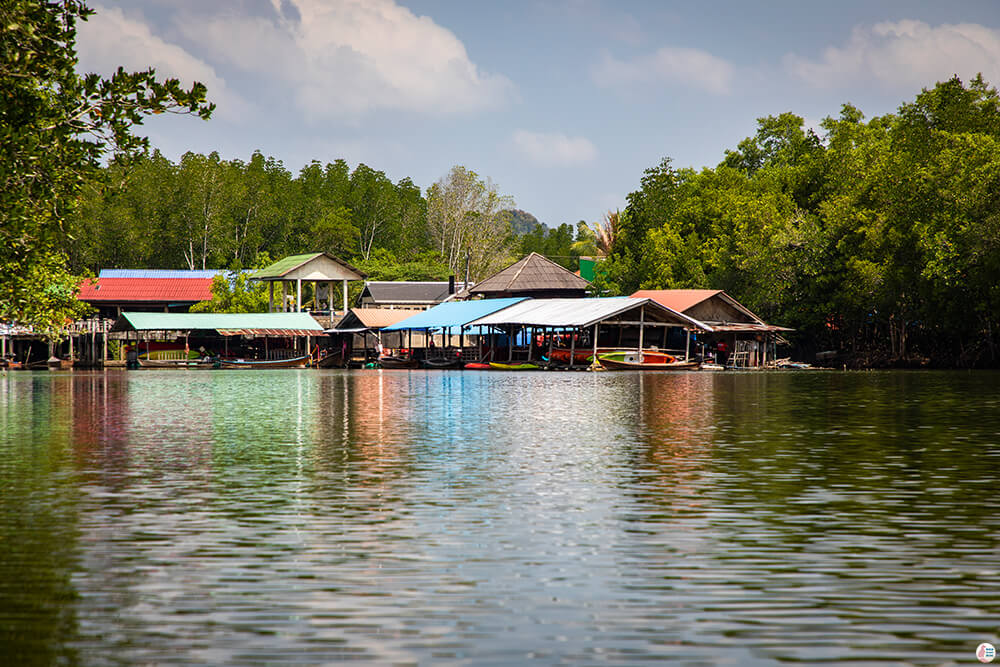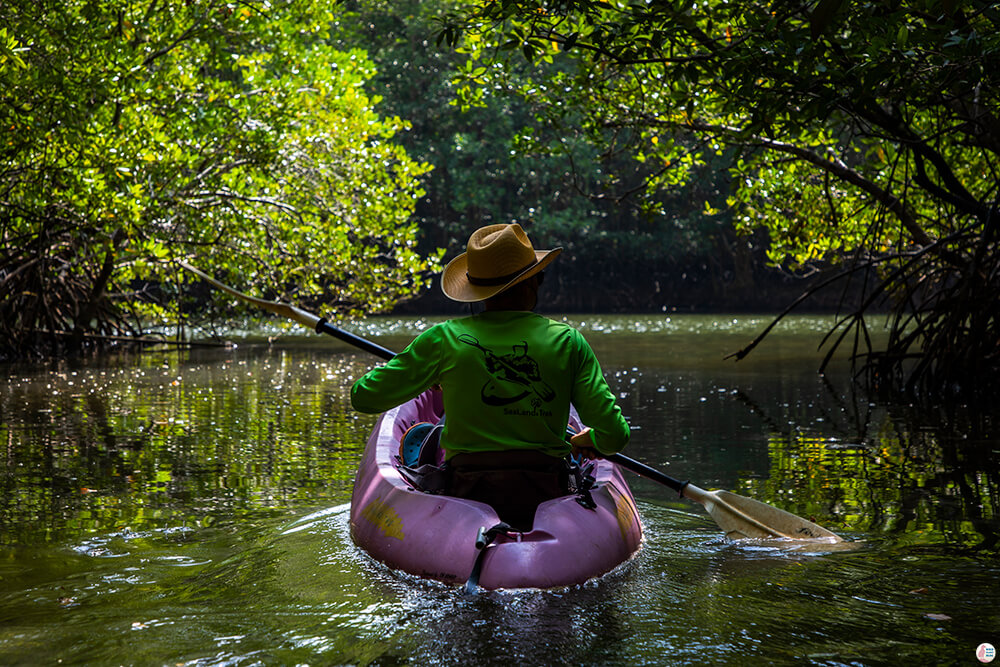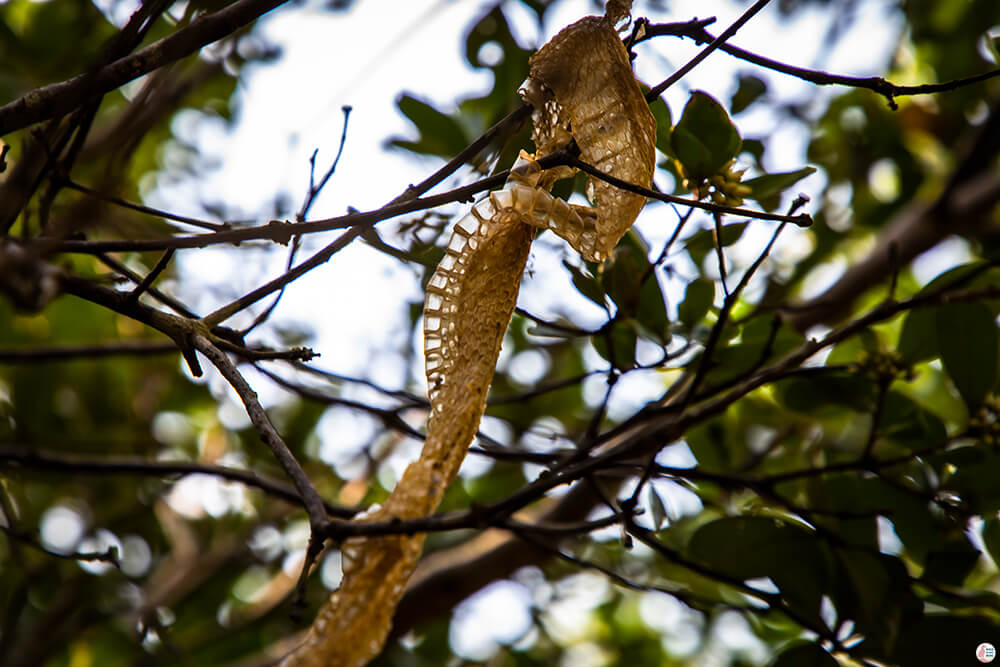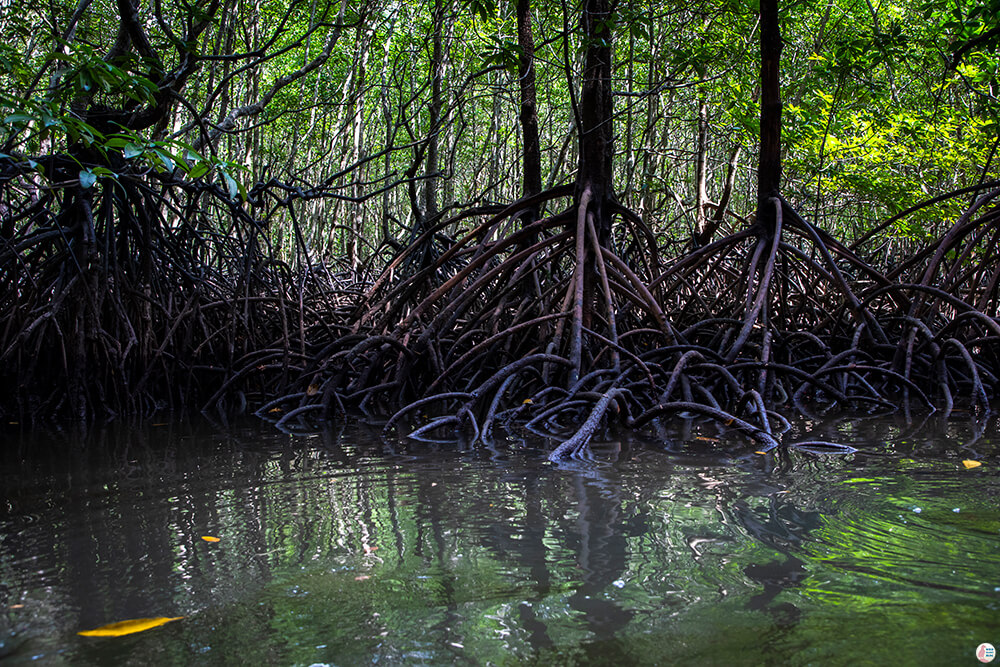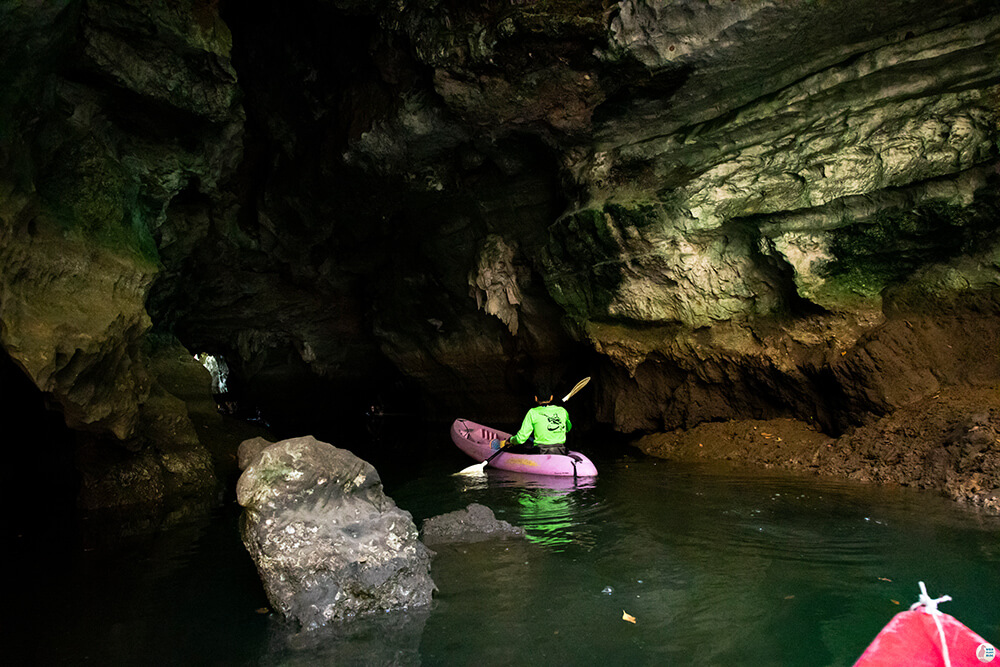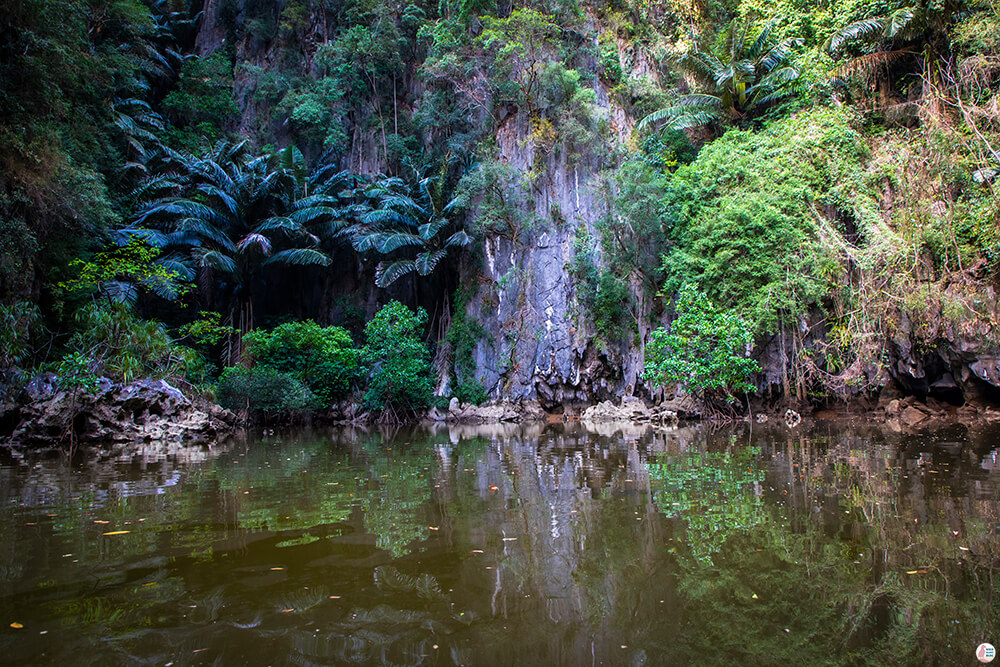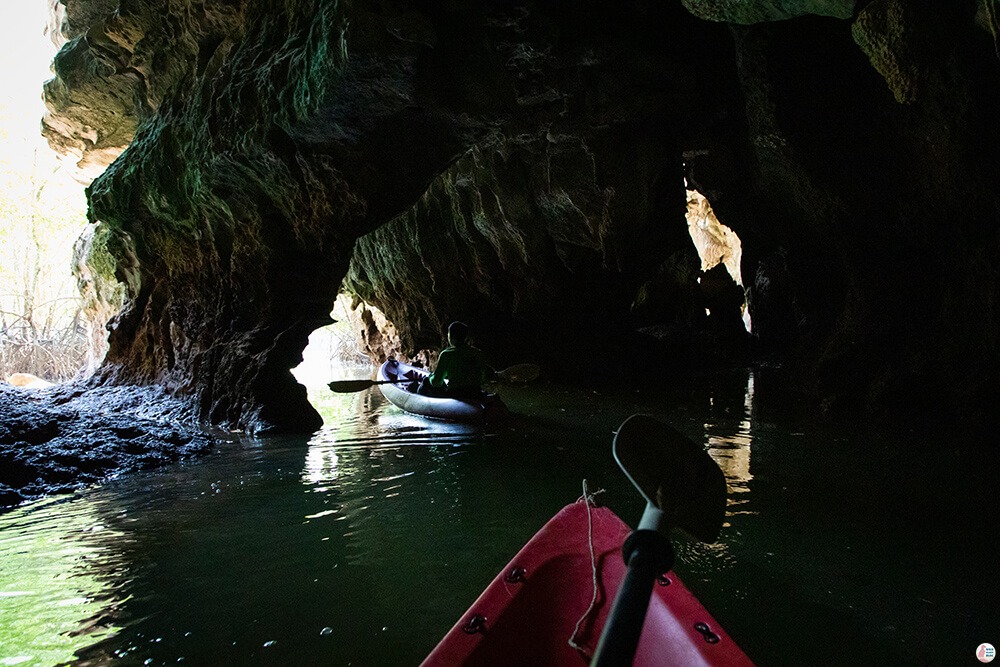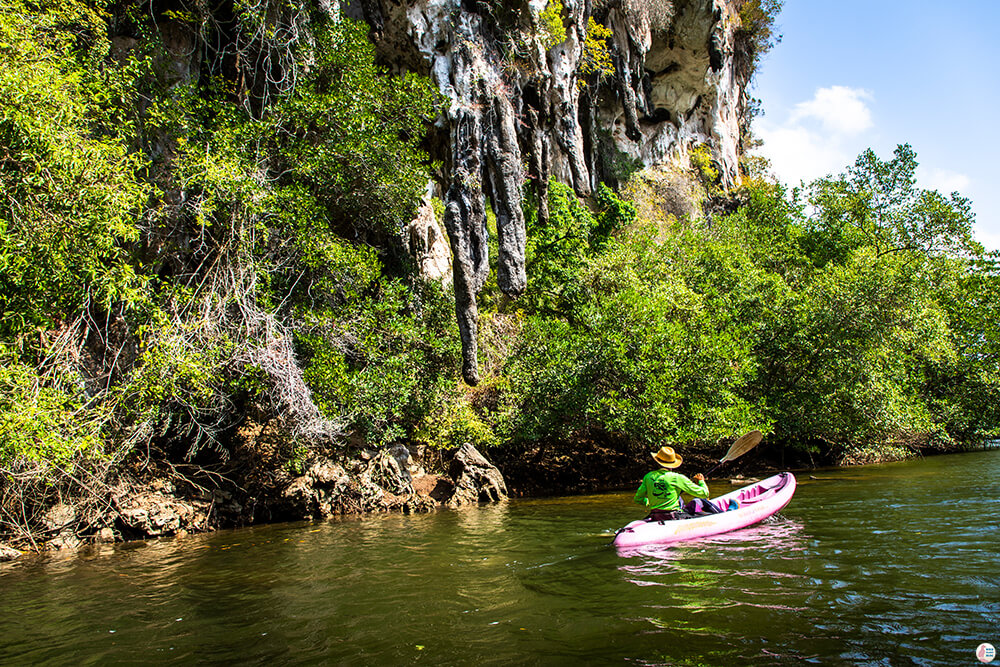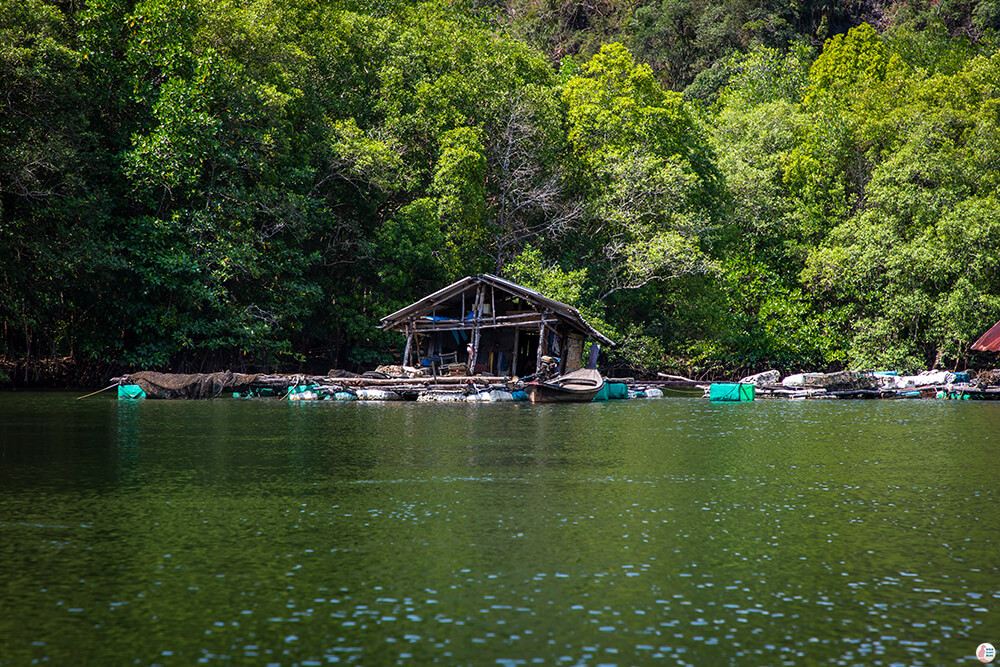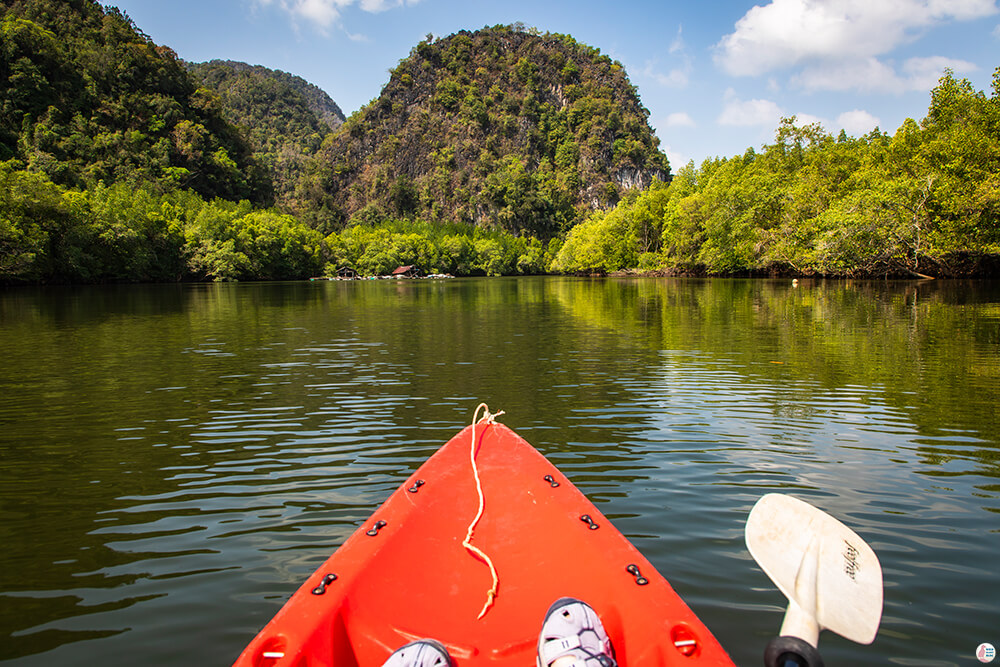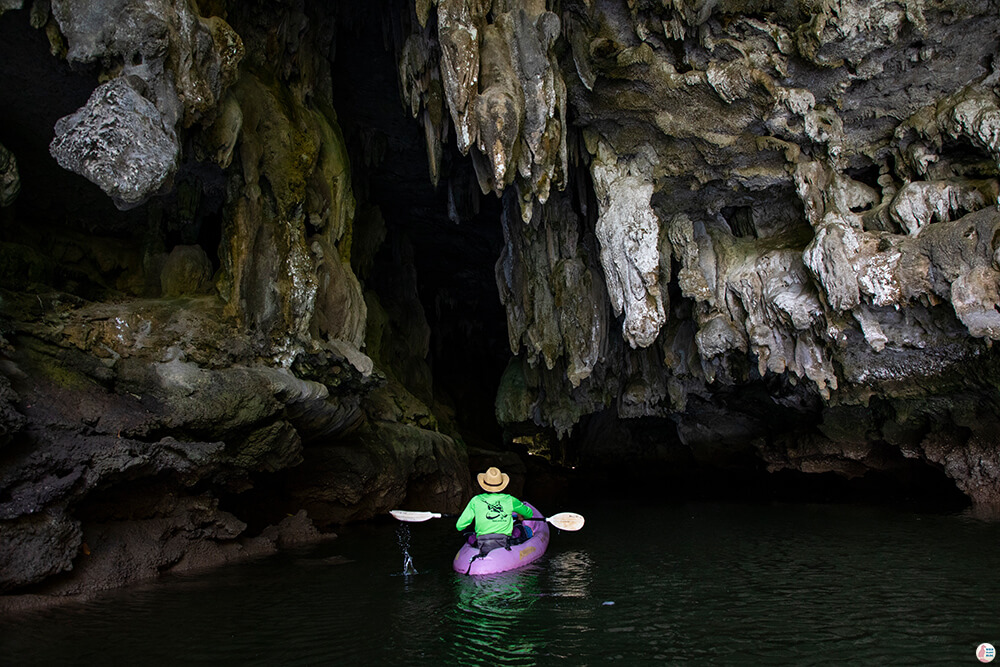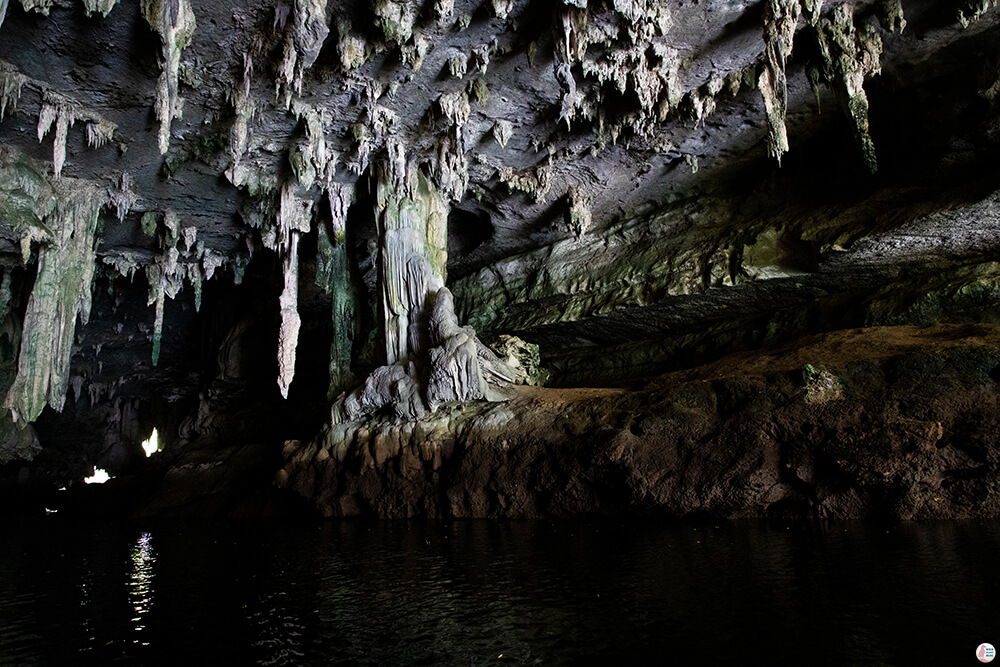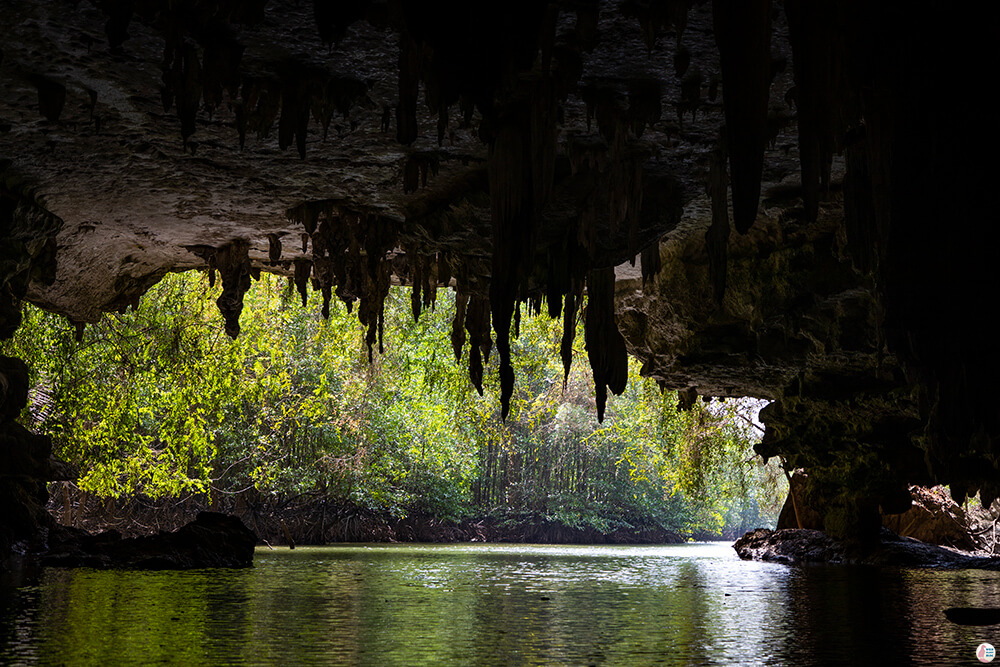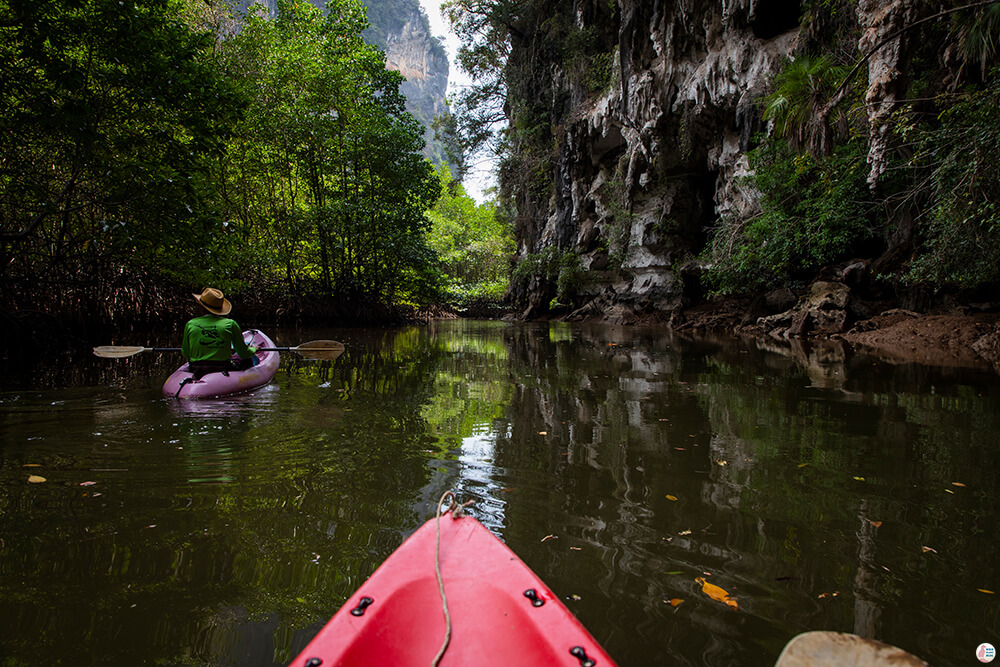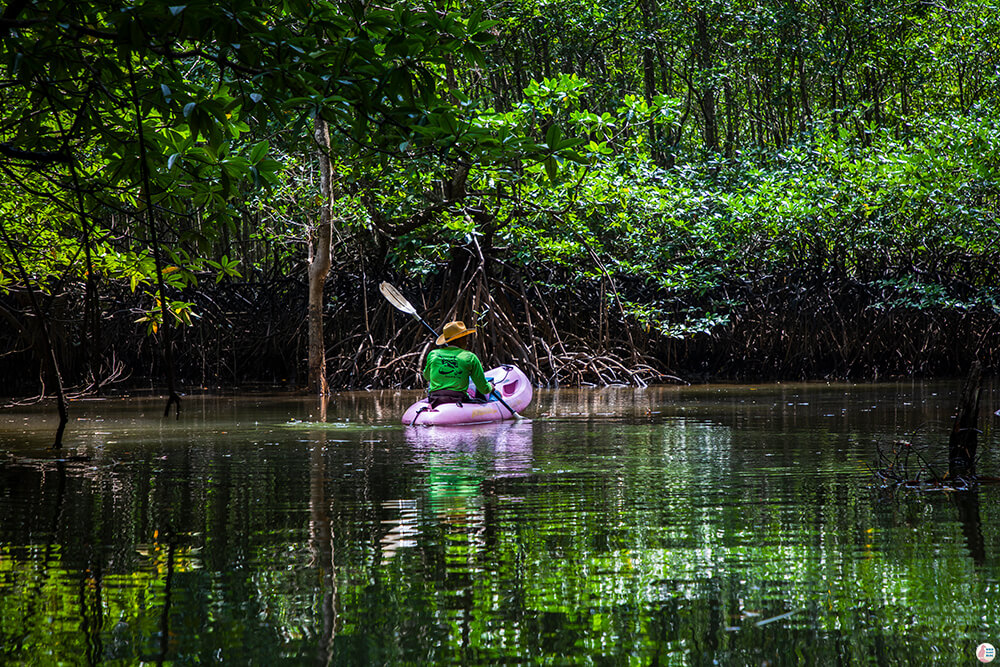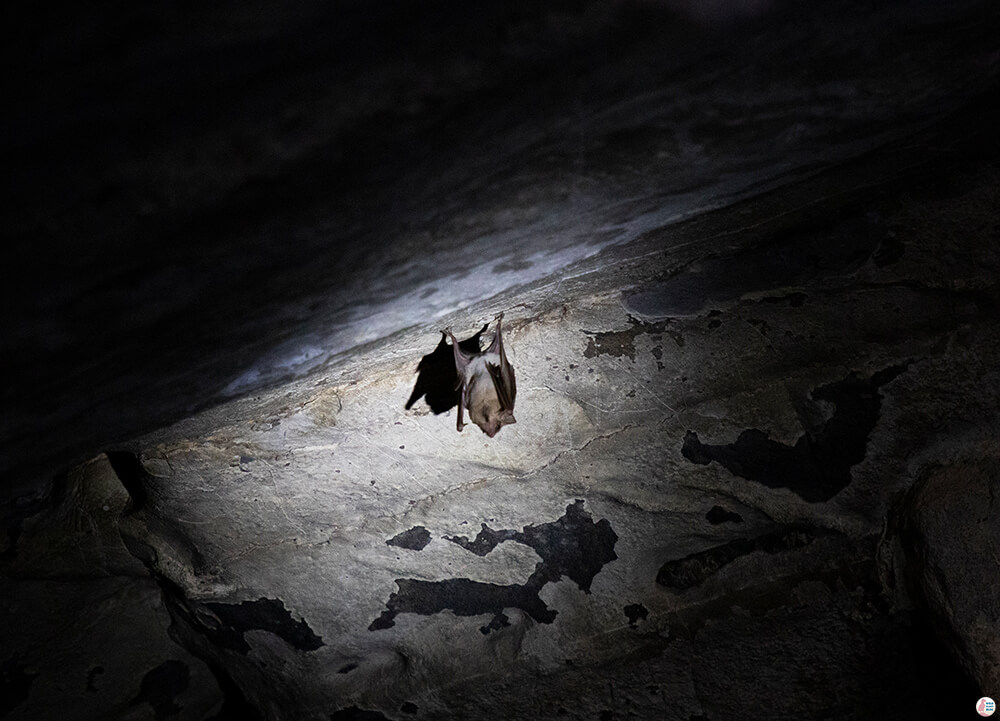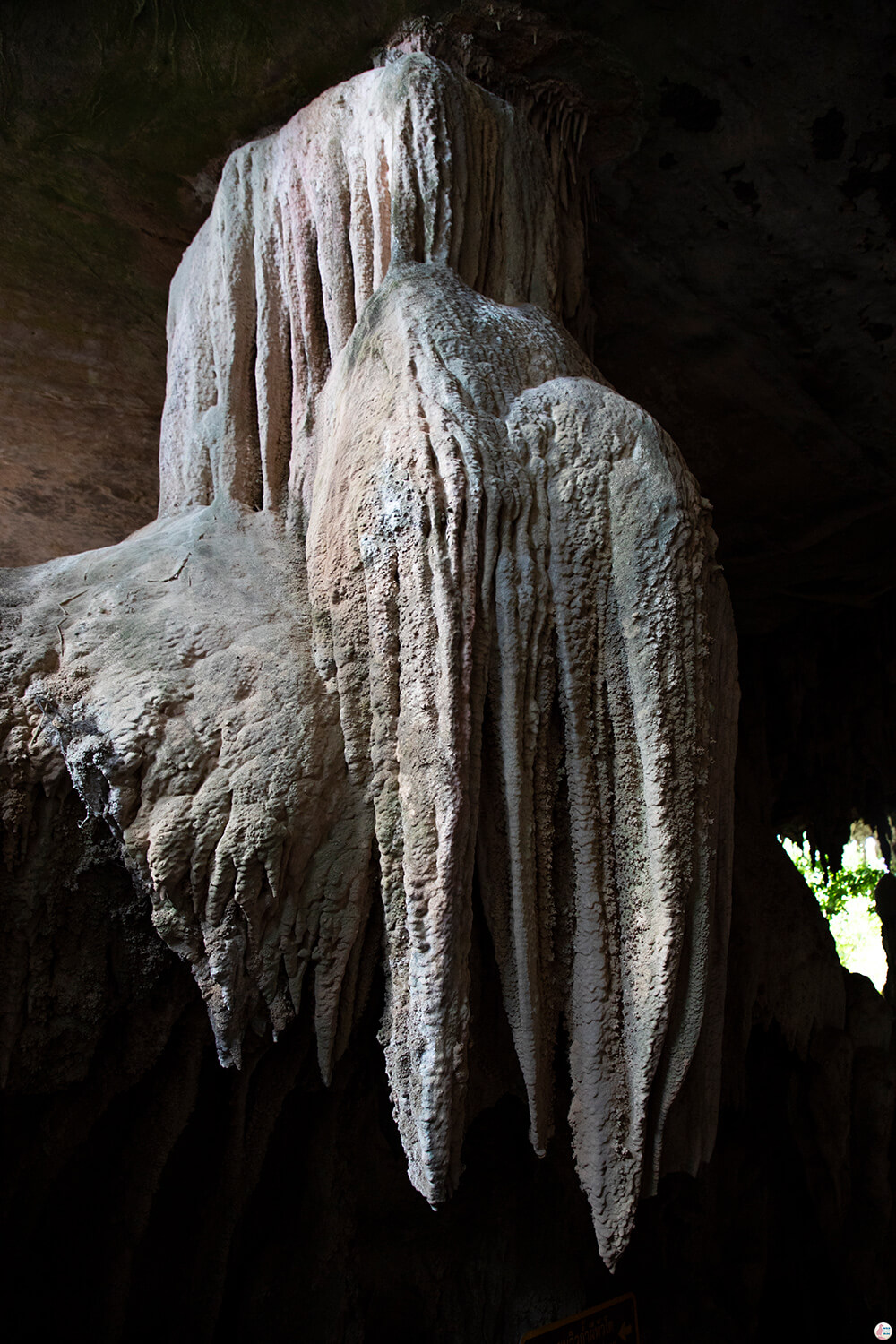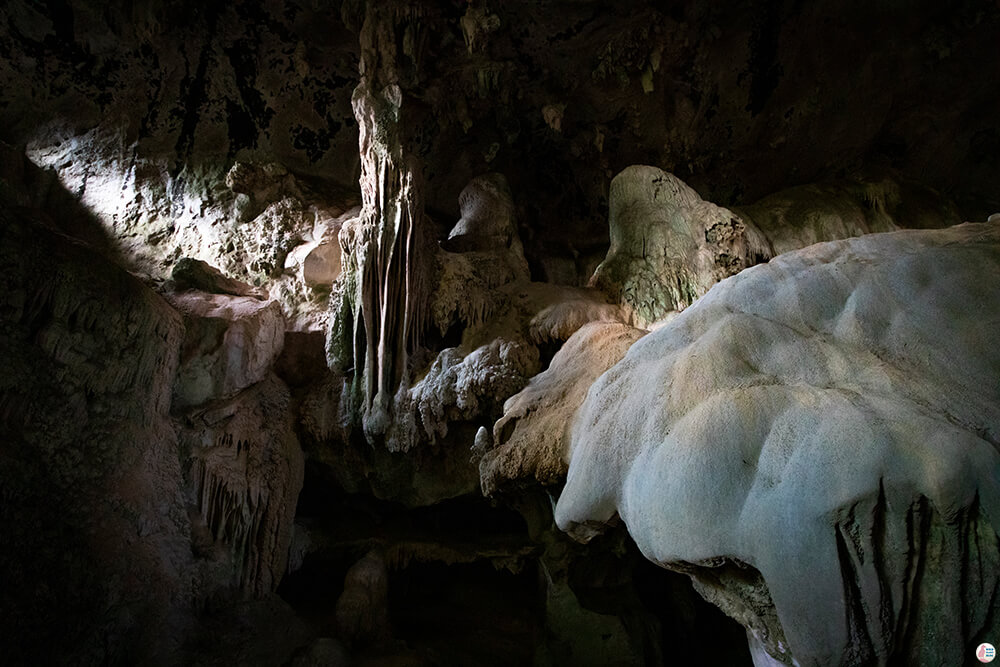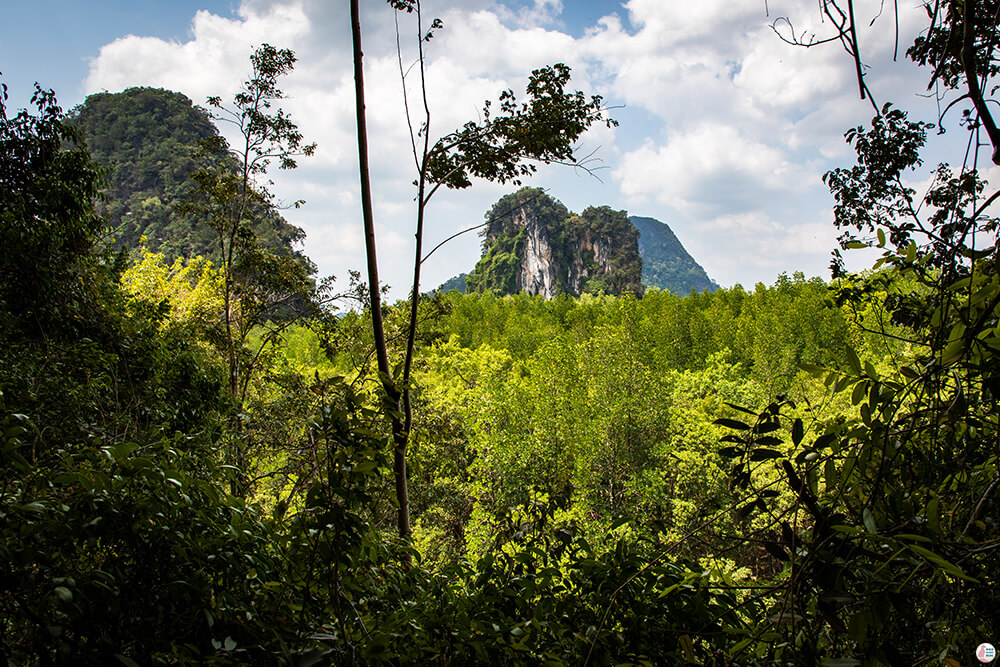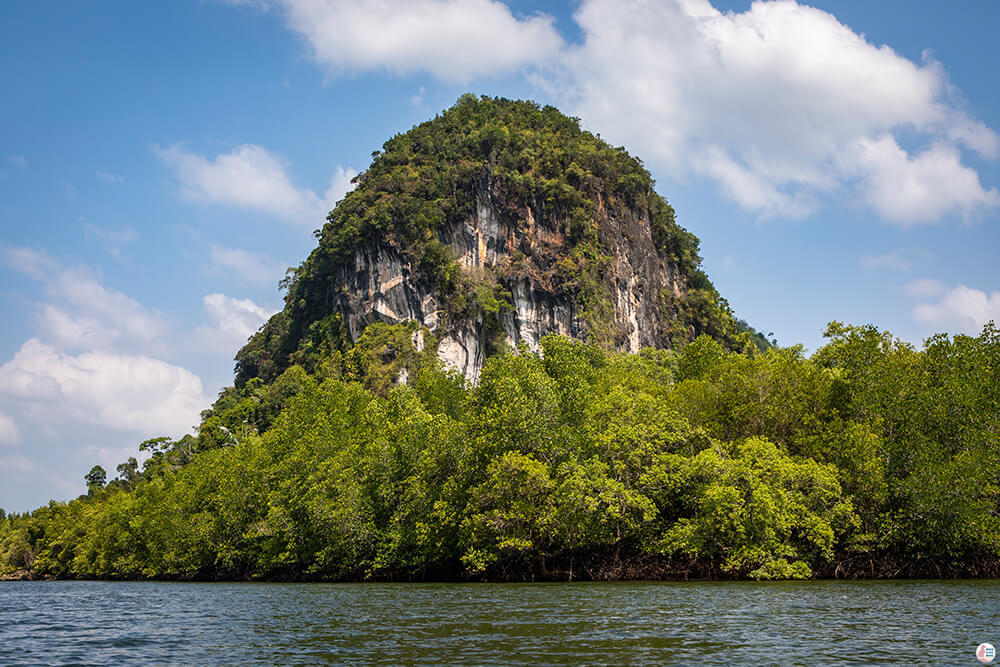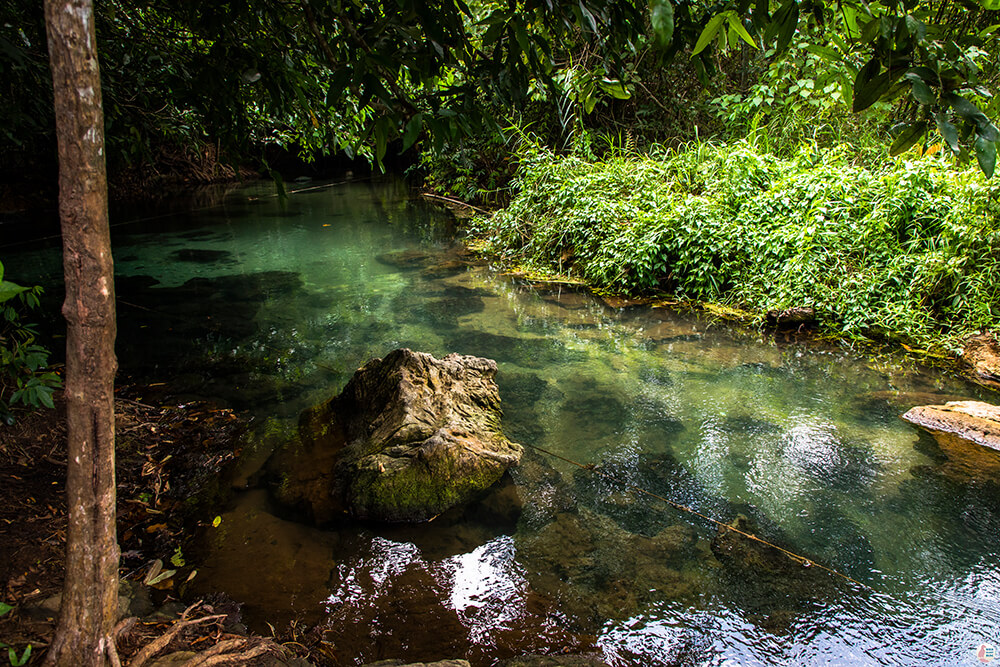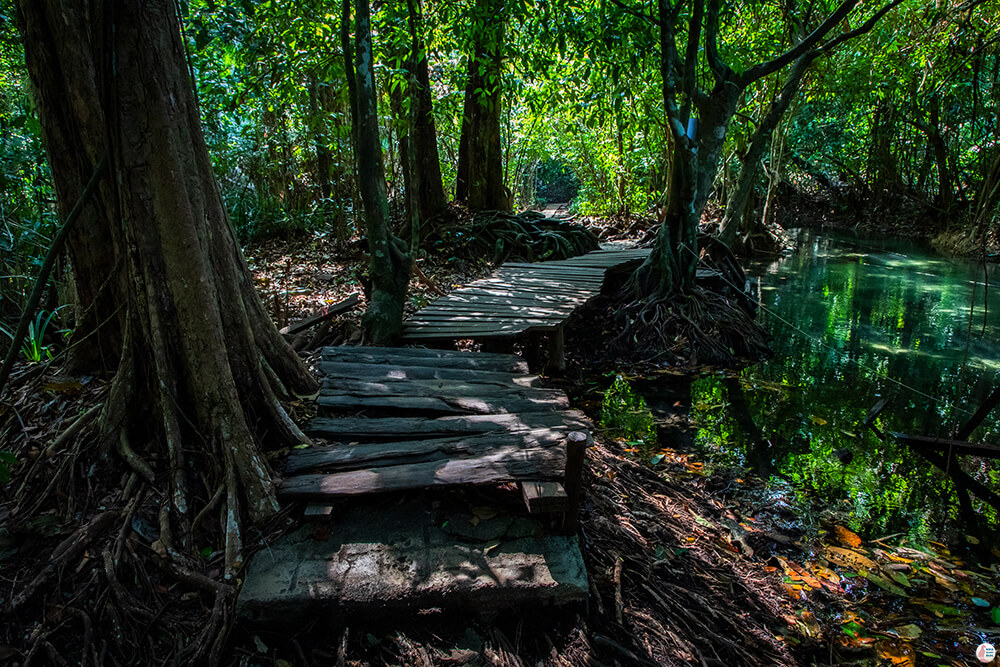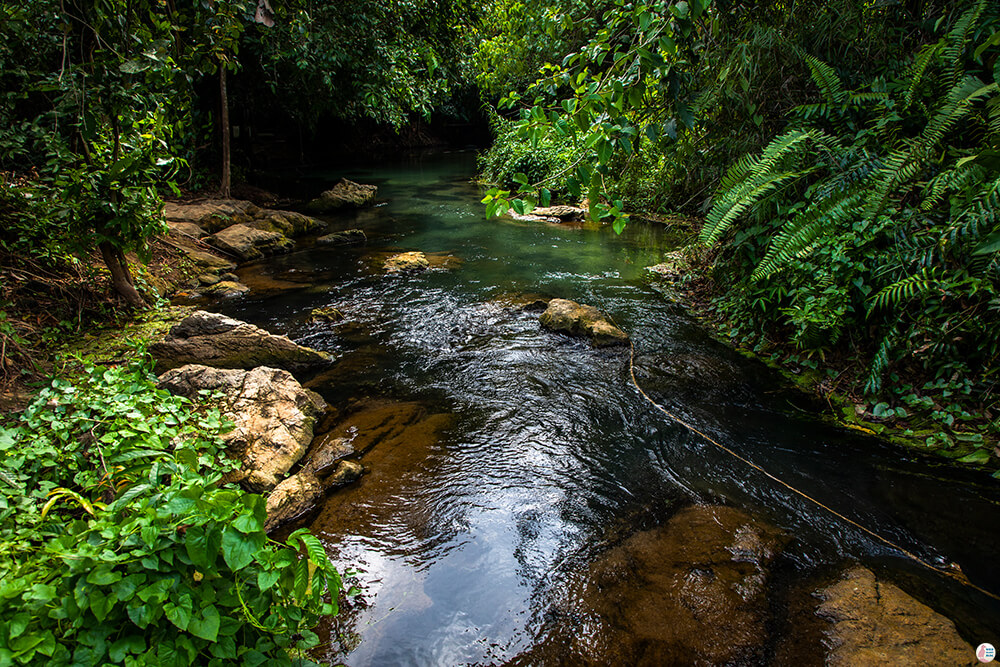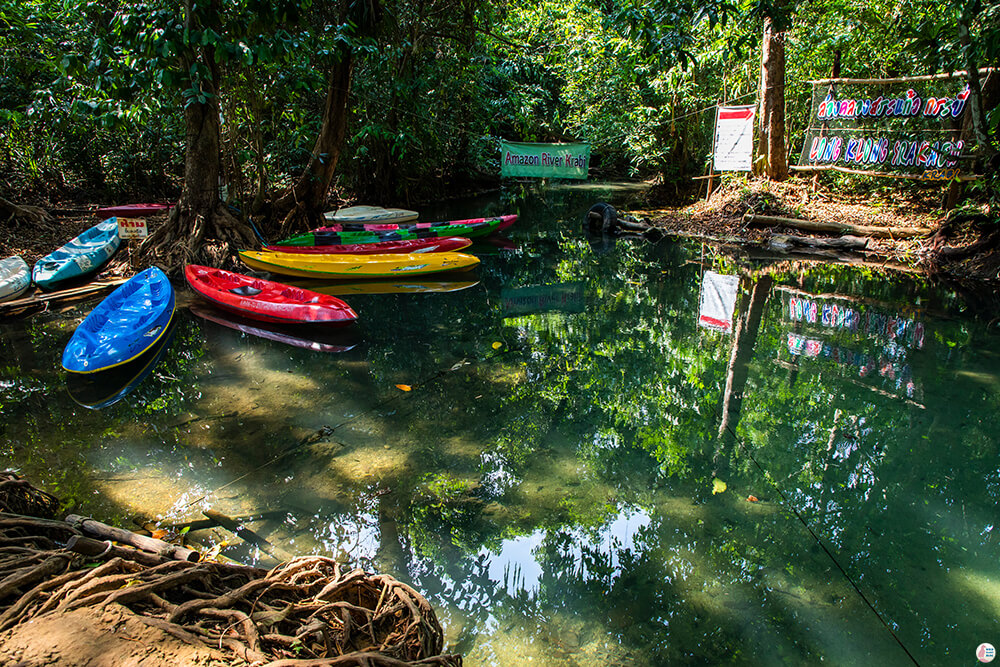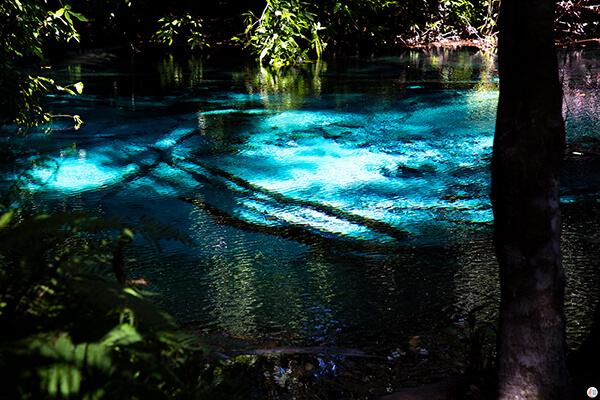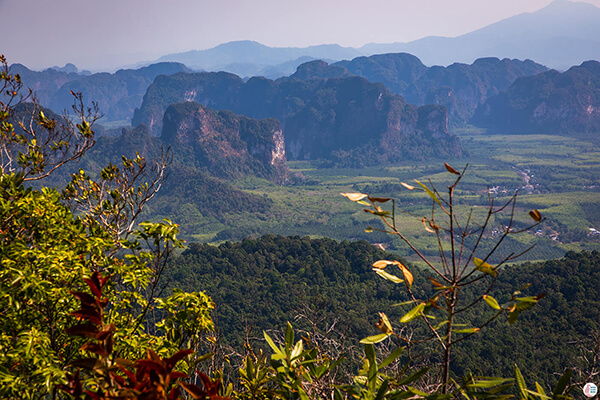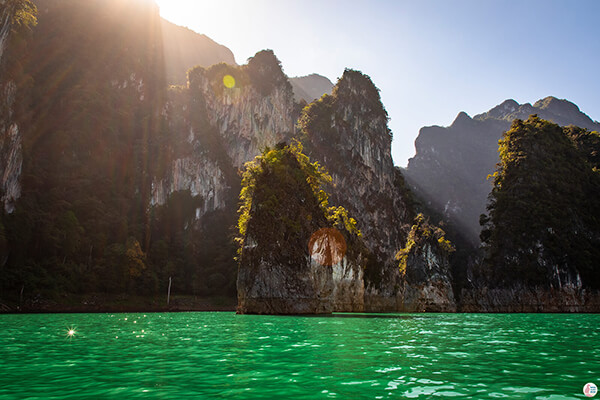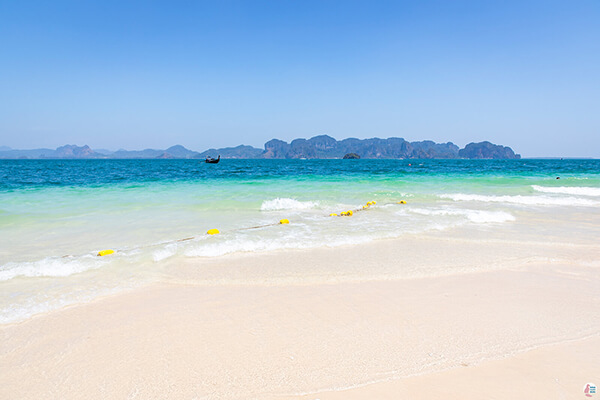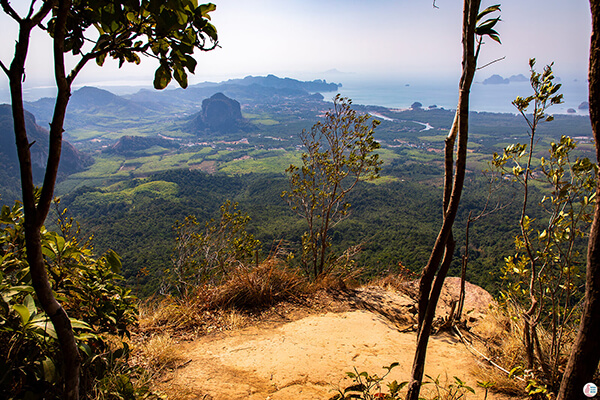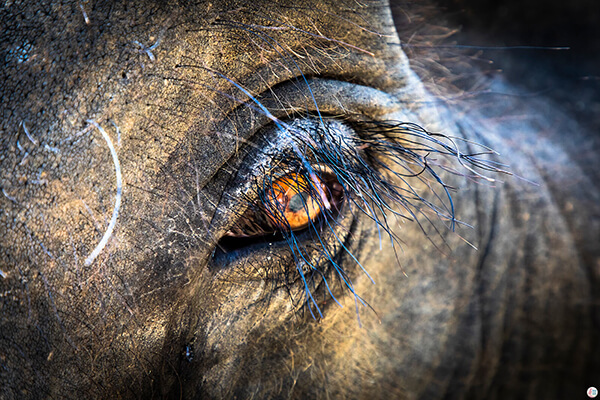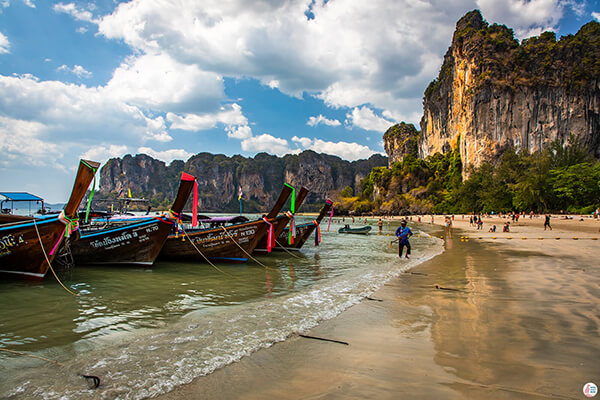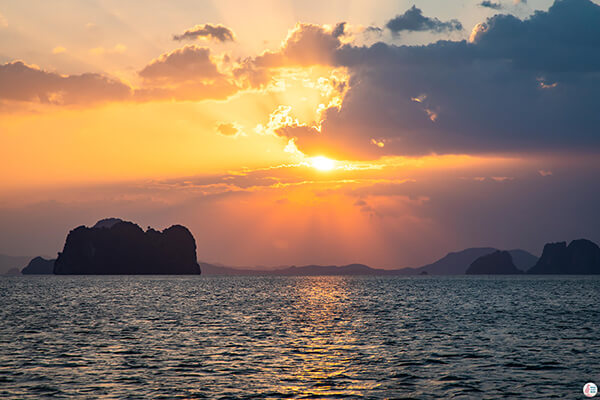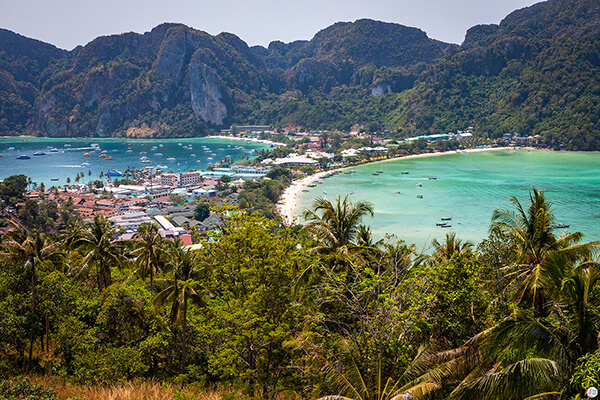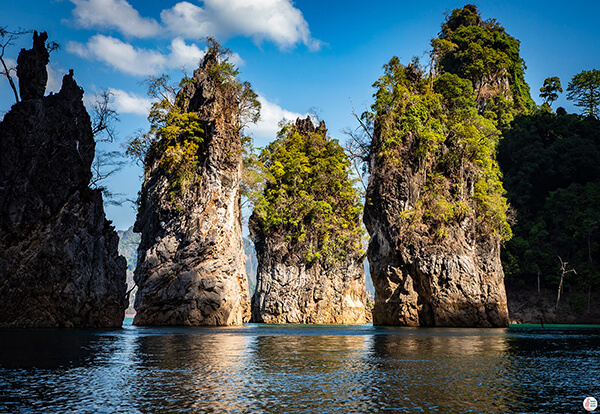Our day started like most days during our 2 weeks trip in Krabi: with a very early breakfast and a minivan picking us up around 8:15 from our hotel. We visited Thailand just before the coronavirus outbreak, in mid-February 2020, and there were significantly less tourists than normal. In the description of the trip it was specified that a minimum group of 10 people is required for this trip, however, it turned out that we were the only ones.
After about 45-minute drive we had reached our destination: a small kayaking centre on the Tha Pring river in Than Bok Khorani National Park.
Our guide was a local man from Ao Nang, who spoke good English and was very knowledgeable of the surroundings.
I didn’t have any experience with the kayak before, so this was the first time I had ever been in one. The kayaks were for 2 people and I sat in the front and my boyfriend sat in the back. I had a big camera with me, and I really wanted to make sure it is safe, so I put it in a waterproof sack. We received water bottles and dry sacks from the guide, so, in the end, my camera had double protection against the water. Turned out that the water on Tha Pring River was very calm, so the possibility of falling into the water was really slim.
This kayaking trip was the first trip we experienced during our 2-week holiday in Krabi and I was really amazed by the green colour of everything and the impressive karst landscape in Than Bok Khorani National Park.
Kayaking through mangrove forests
We started paddling along the narrow channels of the river, through mangrove forests, where we noticed a dry skin from a snake.
We haven’t seen any scaly creatures during our trip, but we were told that there are quite many of them in the forests here and there have been sightings of monitor lizards, king cobras and reticulated pythons. Other animals living here are gibbons, langurs, civets, pangolins, fishing cats and lots of other animals. I am actually a bit disappointed because I haven’t seen any snakes during our trip to Krabi and I have seen very few monitor lizards, which seem to be more common on the islands.
Lagoons…
After a while, we reach a small and narrow cave, which leads to a lagoon. The guide was saying that we can only enter this lagoon during low tide. During high tide the water level rises so much that it blocks the access to the lagoon. With no cars, no people here except us, the lagoon looked incredibly peaceful and you could hear the sounds of animals around. Even if you couldn’t see them, you could hear that there were actually a lot of animals hidden in the thick bushes surrounding the lagoon.
After the lagoon we head back towards the starting point and there is a possibility to stop for a quick bathroom break or to get more water. On the way back you can admire the limestone formations and some natural huge bees’ nest and wasps’ nests high up on the rocks.
After the quick break you continue your journey on the other side of the Tha Pring river, towards the Phi Hua To Cave. On the way our guide gave some insights into the lives of the locals here. Seems that the locals don’t really receive a pension that could sustain them without working, so most of the old people turn to fishing. According to the guide the educated young people go work for the government and it seems to be considered a really good job and they get to retire and live off their pensions, however this seems to not be the case for most Thai people. Their livelihoods are heavily dependent on fishing and it seems that they also catch enough fish in order to exchange the fish for chicken or other kinds of food.
Kayaking through Tham Lot (Lot Cave)
Before reaching Tham Phi Hua To, we turned to a narrow channel and experienced the best part of this kayaking trip! We went through an amazing cave, called “Tham Lot”, with awesome stalactites hanging from the ceiling! The fact that we were kayaking through these formations instead of walking, made the experience especially beautiful!
Then we reached a really narrow place, next to a wall of rock, “parked” our kayaks on the sand and observed small mudfish making their way outside of the water. Unfortunately, they were quite small and fast and I wasn’t able to snap a picture of them.
Visiting Phi Hua To Cave (aka Tham Hua Kalok – Human Skull Cave)
After Tham Lot and its surroundings we stopped to a dock where we got off our kayaks and visited the Phi Hua To Cave, which is famous for its prehistoric wall paintings. The cave is also known as “Tham Hua Kalok”, which means “Human Skull Cave”. This cave has a total of 238 prehistoric rock paintings on its roof and walls and it suggests that people were living here already 3 000 years ago and relied on the natural resources from the area for food and shelter. However, the cave doesn’t have only paintings on its walls, but also bats and beautiful cave formations. There are also stairs leading to a viewpoint outside of the cave.
After the cave visit, we headed back towards the kayaking centre, where we enjoyed a delicious lunch with traditional Thai food.
Bathing in Crystal Clear Waters at Long Klong Srakaew
After food we got back to our minivan and headed towards Long Klong Srakaew. Other than some local people bathing and playing in the water there were maybe 2-3 tourists here besides us. There is a changing place at the site, where you can put your bathing suit on. The water is really clear, you can see a few fish around and you can swim for a couple of meters. There are also a few paths you can go walk on through the jungle.
The centre also rents out kayaks and you can go explore the Klong Srakaew river and the jungle, however, that part was not included in our trip.
After exploring the area around Long Klong Srakaew, we got back into our minivan and went back to our hotel. We arrived at our hotel around 4 in the afternoon. Our first trip in Krabi was great and I highly recommend it to everyone looking to explore the waters and caves of Krabi!
Looking for a place to stay in Krabi? Visit booking.com!
